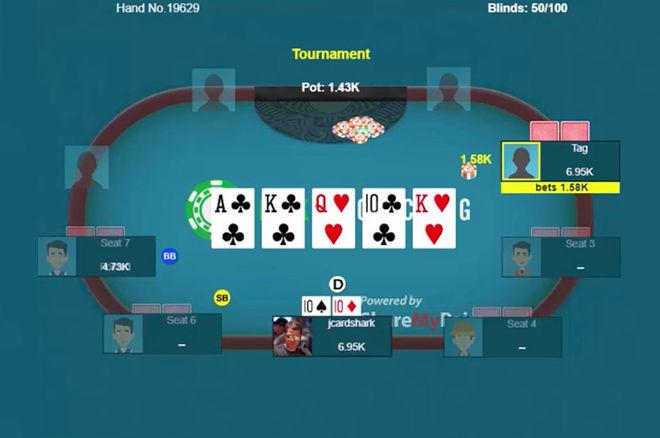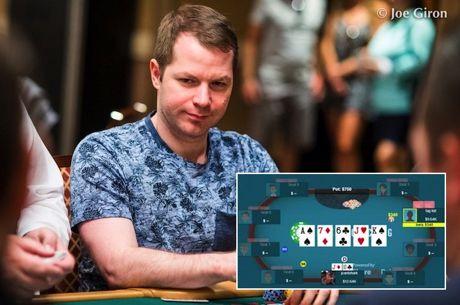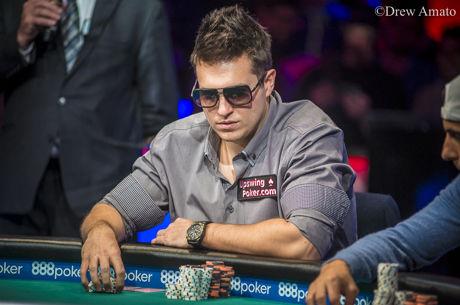When a Full House May Not Be Enough: A Tough River Decision

Today's hand comes from early in a six-handed $1,500 buy-in World Series of Poker event.
The blinds were 50/100 and a tight-aggressive player opened for 275 from under the gun (or the "lojack" seat in this six-handed situation). It folded to me on the button where I had been dealt 10?10?. Both the opener and I were sitting with about 7,500 to start the hand.
I typically call in this spot with this hand, although as I explain below three-betting would be fine as well. I did call here, and after the big blind (with about 5,000 back) called as well, the flop brought three overcards to my pair of tens, coming A?K?Q?.
Not a great start for me, but after it checked around the 10? came on the turn to improve me to a set. Of course, the board still wasn't the greatest for me, with both a flush and a straight very possible for my opponents.
It checked to me again, and I decided to make a small bet of 275 into the pot of 875. Only the original raiser called.
The river then brought the K?, making me a full house. Good, right? But then my opponent led with a big bet of almost 1,600 �� a little more than the size of the pot.
Now what?
Take a look at what happens below, and hear my analysis of what types of hands my opponent might have with which to make a big river bet like this.
As I say in the video, in this particular event (and at this stage of the event), this was most likely a fold for me, but I nonetheless called.
Ignoring what my opponent ended up having in this hand, what would have been your response to his big river bet �� fold? call? raise?
Jonathan Little is a professional poker player and author with over $6,500,000 in live tournament earnings. He writes a weekly educational blog and hosts a podcast at JonathanLittlePoker.com. You can follow him on Twitter @JonathanLittle.









